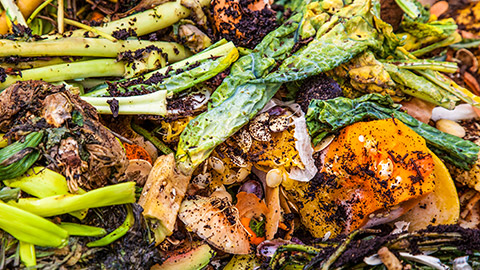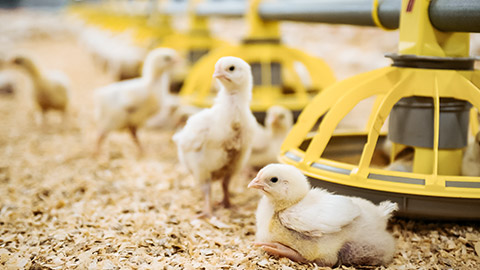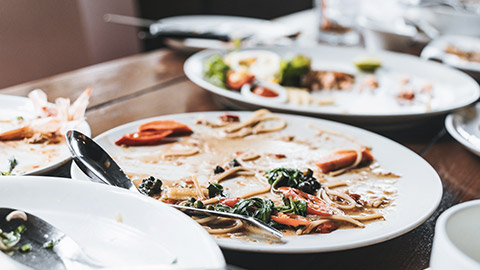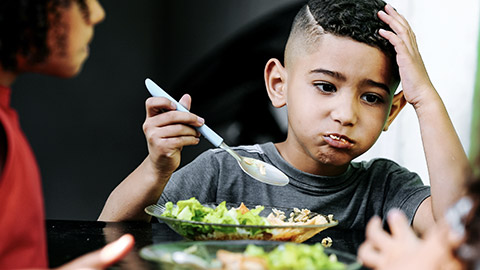Welcome to Course 10 (Commercial Kitchen Operations: Sustainable Strategies) of the Diploma in Cookery Level 5 with Internship.
This theory course examines the impact the hospitality industry has on the environment and how choices made in professional kitchens can impact the planet’s natural resources. As leaders in the way consumers see and eat food, the hospitality industry has a duty to act responsibly, in partnership with the public and with farmers, fishermen and growers to ensure future generations are able to enjoy the abundant variety of produce we have taken for granted for decades.
We look at some of the big issues regarding preserving Earth’s biodiversity and abundance of resources by minimising the negative impact our industry has on the environment. We focus on ways to make maximum use of the produce and products we grow, farm, catch and produce and the hospitality industry is a driver of trends demonstrating best practice in responsible food preparation and food service.
A key takeaway from this course should be that running a sustainable kitchen benefits not only the environment but makes sound business sense too as it ties in with key current customer trends.
We will examine the four key areas where the hospitality industry impacts the environment:
- Food waste
- Selection of primary ingredients to put on menus
- Energy use and water use
- Packaging, disposables and consumables use.
There is one 5-credit written assessment, to be submitted to Turnitin by the date shown on your 5 week planner. Your tutor will advise you where you should be up to each week and remind you of the dates for checkpoints and the final submission.
How much food do we waste? Is this an important issue?
Study the image below to learn the answer.

After you have studied the information above, complete the activity that follows to match the statement with the data shown in the table below:
| A | Amount of food each person throws away in the UK. |
| B | CO2 impact of food waste in UK. |
| C | Amount UK pays for food that doesn’t get eaten. |
| D | Percentage of food produced in USA that is thrown away. |
| E | Barrels of oil used to produce food that goes to waste in USA. |
| F | Bread rolls wasted in the UK. |
| G | People who could be fed in USA with wasted food. |
| H | Freshwater consumed to produce food that goes to waste in USA. |
| I | Sausages thrown away in UK. |
| J | Food wasted by the USA and Europe could feed the world. |
| K | Amount UK spends on foreign economic aid. |
Our throw away culture is costly
Billions of kilograms of food are thrown away each year, worth billions of dollars and enough to feed millions of people. Wasted food is a very serious issue. Our throw away culture, costs us time, money and our environment.
Exercise 1
Study the next poster, “Sustainability in the Restaurant Industry’ and take some time to consider the following questions. (Do not seek further information at this stage – we will be covering the topic in more depth later.)
- What do you understand by the term ‘sustainability’?
- What are some of the steps a restaurant could take to become more sustainable?
- What are some of the benefits to a restaurant of adopting more sustainable practices?

Self-Directed Learning
In your journal write about your own experiences of food waste (at home or in your workplace).
- How much gets wasted?
- What types of food are mostly thrown away?
- Why do we waste food?
- What are some of the consequences of food waste?
- Do you take any measures to avoid wasting food?
Contributing Factors
This video on food waste identifies some of the factors to why so much food is wasted. (The video ends at 9.07)
Watch
You will have noticed both “Best Before’ days and “Use-By” dates on products. Did you pick up what the difference is between these and how important they are?
Exercise 2
There are many sources of information on food waste available online. Spend 30 minutes researching the topic and make notes on the facts and figures showing the extent of the problem.
Make sure to save any useful website links to use later in your assessment. Use these questions as a starting point of what to look for, but note anything else you find which is relevant.
- How much food is wasted annually?
- Which countries are most responsible for food waste?
- Which parts of society are most responsible for food waste? (Think of the food production to consumer chain.)
- How much food waste is the hospitality industry responsible for?
- What kinds of food are most wasted?
Take the WWW food waste quiz.
Self-Directed Learning
Create a simple Food Waste poster or infographic and display this on the class discussion board. Your visual should only include one message or fact.
If you need some inspiration you can find lots of examples on the internet - like this kit: Be a Food Waste Warrior.

Now you have seen some of the statistics relating to food waste we will look at their significance and why it is such a key issue. In Delivery 4 we looked at the food production journey – from growers to consumers. Food waste can (and does) occur at each step of the way. (Note: “food waste” applies to food commodities at the retail or consumption stage - shops, hospitality businesses, households; “food loss” is used for food commodities discarded before the retail/consumption stage – you may see both terms used, but we will use “food waste” to simplify things.)
Growers
Food loss can occur during the growing phase for crops, the raising of livestock or in catching of wild produce (e.g. fishing). Food loss can be through:
- Weather damage (e.g. an estimated 30% of French wine will be lost in 2021 due to a late cold snap and frosts in April.) (The Guardian, 2021)
- Damage caused during the harvesting of crops through faulty machinery or spillage.
- Consumer preferences - some crops are left to rot and not picked because they are seen as “imperfect” and likely to be rejected by supermarkets. Other crops remain unpicked for economic reasons – the cost of picking and packing is more than the return for selling the produce.
- For livestock - disease or animal death causes losses. (e.g. Foot and Mouth disease outbreaks are devastating for cattle farmers.)
- The fishing industry is a major offender when it comes to food loss. Discarding bycatch is the damaging practice of catching non-target species, then throwing them back, usually dead, into the sea.
Processors
- By-products of food processing are a cause of food loss (e.g. sugar cane pulp).
- Spoilage during processing through operational errors or mechanical outages (equipment malfunction, power outages etc.).
- Food rejected by quality control or by the customer.
Distribution
- Spoilage due to poor handling, storage or delays in transportation.
- Spillages.
- Container or packaging damage through mishandling.
Retail/Wholesale
- Overstocking of perishable products which cannot be sold quickly enough.
- Poor handling and storage.
- Unpredictable customer demand.
Households
- Over-purchasing and poor meal planning.
- Over-reliance on best-by dates.
- Non-optimal storage conditions (uncovered food, over-crowded fridges etc.)
- Lack of knowledge on how to prepare fresh food, how to save and reuse left overs and how to preserve/freeze food to minimise waste.
- Supermarkets promoting “specials”, such as BOGOF (Buy One, Get One Free) which encourage customers to buy more than they can use.
- Product packaging sizes too big for all of the product to be used before it expires.
Exercise 3
Watch the video Life of A Strawberry, which follows the strawberry from ‘field to fork’, then copy and complete the value chain in your journal. (List possible food loss/waste at each step.)
Food loss and waste along the value chain
| Production | Handling & Storage | Processing & Packaging | Distribution & Market | Consumption |
|---|---|---|---|---|
| During or immediately after harvesting on the farm | After produce leaves the farm for handling, storage, and transport. | During industrial or domestic processing and/or packaging. | During distribution to markets, including losses at wholesale and retail markets. | Losses in the home or business of the consumer, including restaurants/caterers. |
|
enter here: (loss/waste) |
enter here: (loss/waste) |
enter here: (loss/waste) |
enter here: (loss/waste) |
enter here: (loss/waste) |
Download the table and complete the bottom row.

Self-Directed Learning
Read the following articles on antibiotic use in chicken farming (and carry out any necessary further research), then answer the questions in your journal.
What's in your holiday poultry?
The Future of Chicken, Without Antibiotics
Questions:
- How are antibiotics used in chicken farming?
- How widespread is the use of antibiotics in chicken farming?
- What is antibiotic resistance? What causes it?
- Why are experts concerned about it?
- How does antibiotic use in New Zealand compare with overseas?
- Would free-range farming remove the need for antibiotic use in chickens?
As you may recall from the beginning of this module, food waste is impacting in ways you may not have realised. We'll break that down a bit further now and look at the:
1. Environmental Impact
All food that is produced consumes resources to grow, harvest, transport, store, and cook. Food waste is estimated to be up to 35% of food produced in some countries — clearly an enormous waste of the fuel, energy, and other inputs needed to produce it. It is estimated that all the food waste produced in the USA would take a farm nearly the size of California to grow. (environmentalleader.com, n.d.), (ReFED, n.d.) Not only does this food get produced, transported, stored, maybe cooked and then discarded uneaten but worse still much is disposed of in landfills.

Exercise 4
What impact does uneaten food disposed of in landfills have on the environment? Research the topic and answer these questions in your journal:
- 24% of US landfill is made up of food waste – what about other countries?
- Which greenhouse gases are produced by decomposing organic matter in landfills?
- How does the decomposition process in composting differ from landfills?
- What are your thoughts about the greenhouse gases produced by landfills?
These links will get you started on your research:
2. Economic impact
The yearly cost of food waste in the USA is estimated to be around NZ$400 billion (approx. $1200 per person) (ReFED, n.d.) In New Zealand, the estimate is that we waste around NZ$1.8 billion of food each year (approx. $360 per person). (Stuff.co.nz, 2017)
Take some time to research the following points to help understand and compare food waste differences between countries.
- What are the statistics for other countries?
- Are developing countries wasting as much food as developed countries?
- What could this money have been better used for?

Self-Directed Learning
The graph below shows most food losses occur early in the food supply chain for low-income countries but late in the chain for high-income countries. Think about some of the reasons for this trend then copy and complete the summary table in your journal. Discuss with your class.
| Low-income countries | High-income countries |
|---|---|
| CAUSES OF HIGH FOOD LOSSES | |
| • | • |
| • | • |
| WAYS TO PREVENT FOOD LOSSES | |
| • | • |
| • | • |
Download the table to complete the Self-Directed Learning.
Food insecurity
Food security is a term that applies to measuring how well people are able to access safe, sufficient, and nutritious food. If we are “food secure” it means that we can get enough good quality food to meet our nutritional requirements at all times. For some people in our society and many others around the world, this is not always the case and food insecurity is a big problem.
Research the statistics for food insecurity in New Zealand and elsewhere and note them in your journal.
Here are a few sites to get you started:
- New Zealand creates tonnes of food waste. Supermarkets are trying to close the loop
- Kiwi Harvest: About Us - What we do
- Everybody Eats
- What are your thoughts about the number of people who are “food insecure” and the amount of food wasted each year?
- How has the COVID pandemic affected food security?

What kinds of foods are wasted?;
A breakdown of food waste in the USA shows:
- 34% of food waste is from produce (fruit and vegetables).
- 20% is prepared food.
- 16% is dairy and eggs.
- Other food categories account for much less food waste.
(ReFED - Food Waste Monitor, n.d.)
A “bin audit” of New Zealand household rubbish bins showed:
- 26% of food waste from fresh fruit.
- 25% was vegetables.
- 13% meat and fish.
(WasteMINZ & Sunshine Yates Consulting, 2018)
Exercise 5
Study the graph below and then answer the following questions in your journal.
Note: 2015 findings.
(BCG, 2018)
- Select one of the food categories and comment on the amount of waste/loss at each stage of the value chain.
- Suggest reasons for the differing amounts lost/wasted at each stage.
- How does this food category compare to the others?
- Does the value of the wasted amount correspond to quantity? Why/why not?
Self-Directed Learning
No SDL on Fridays, however you should be collecting resources to use in the first part of Task 1 – ‘Investigate the effect that commercial hospitality operations have on the environment and the world’s natural resources’.
To get started on this topic, please watch the video as we start to consider the role hospitality plays in food waste statistics.
Watch
- In the US, 14% of all food waste generated is from food service. (ReFED - Food Waste Monitor, n.d.)
- In New Zealand foodservice is responsible for over 24,000 tonnes of food waste per year – 61% of which is avoidable. (WasteMINZ, 2018)
Food waste is a significant problem for the hospitality industry but well-managed it can actually result in increased profitability. In task 2 we will look at ways in which our restaurants and other food businesses can avoid or reduce food waste and how they can contribute to a more sustainable way of dealing with non-avoidable food waste.
Given the high cost of fresh food, plus the environmental impact of producing all of the food that is wasted, getting a grip on the food waste problem is something every food business should be considering.
How food is wasted in hospitality
While food waste is inevitable in an industry that must anticipate food needs, there are things that can be done to drastically reduce the impact of the problem.
Read the statistics on Food waste and then do the exercise.
Exercise 6
Study the infographic and then complete the task below.
Use the forum to what those numbers mean for a food business.
- Think of examples in kitchens you have worked in (or in campus kitchens) of when these different kinds of food waste occurred.
- Copy and complete the table in your journal. Under each of the three headings list as many examples as you can think of.
| FOOD PREPARATION | PLATE WASTE | FOOD SPOILAGE |
|---|---|---|
| • | • | • |
| • | • | • |
| • | • | • |
Download the table to complete the exercise.
The following articles about food waste are useful background reading to help with this exercise and also with your assessment.
Self-Directed Learning
Work on your draft for the first part of Task 1 – ‘Investigate the effect that commercial hospitality operations have on the environment and the world’s natural resources’. (Make sure you note down the resources you use as you must correctly reference these in your final submission.)
